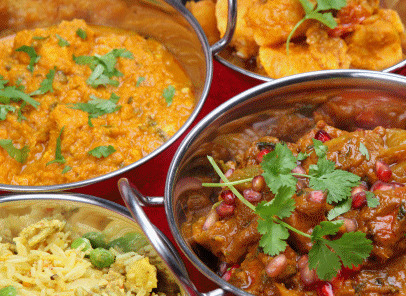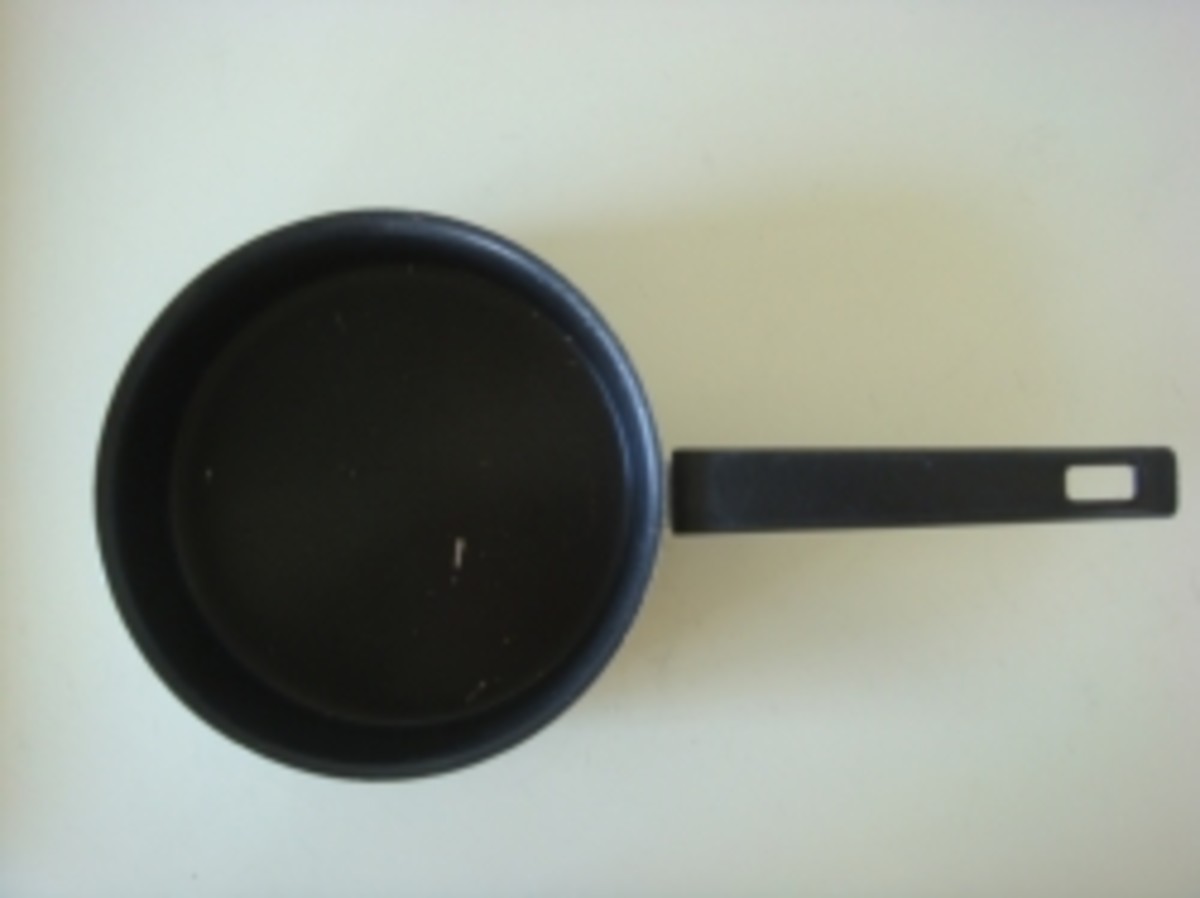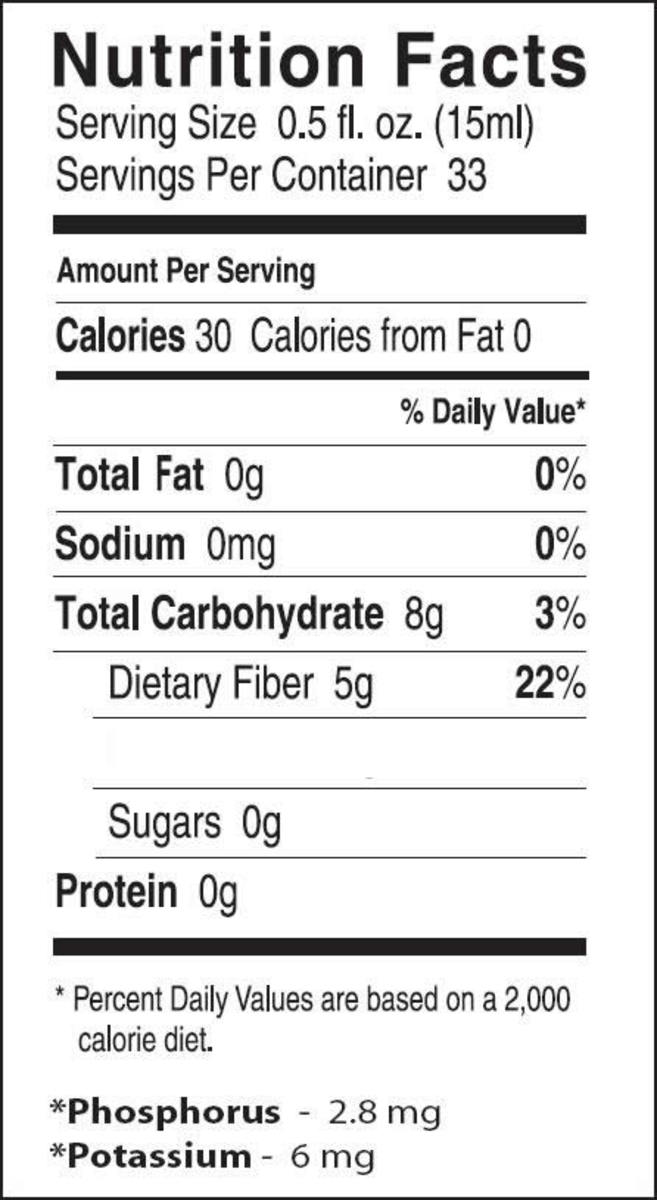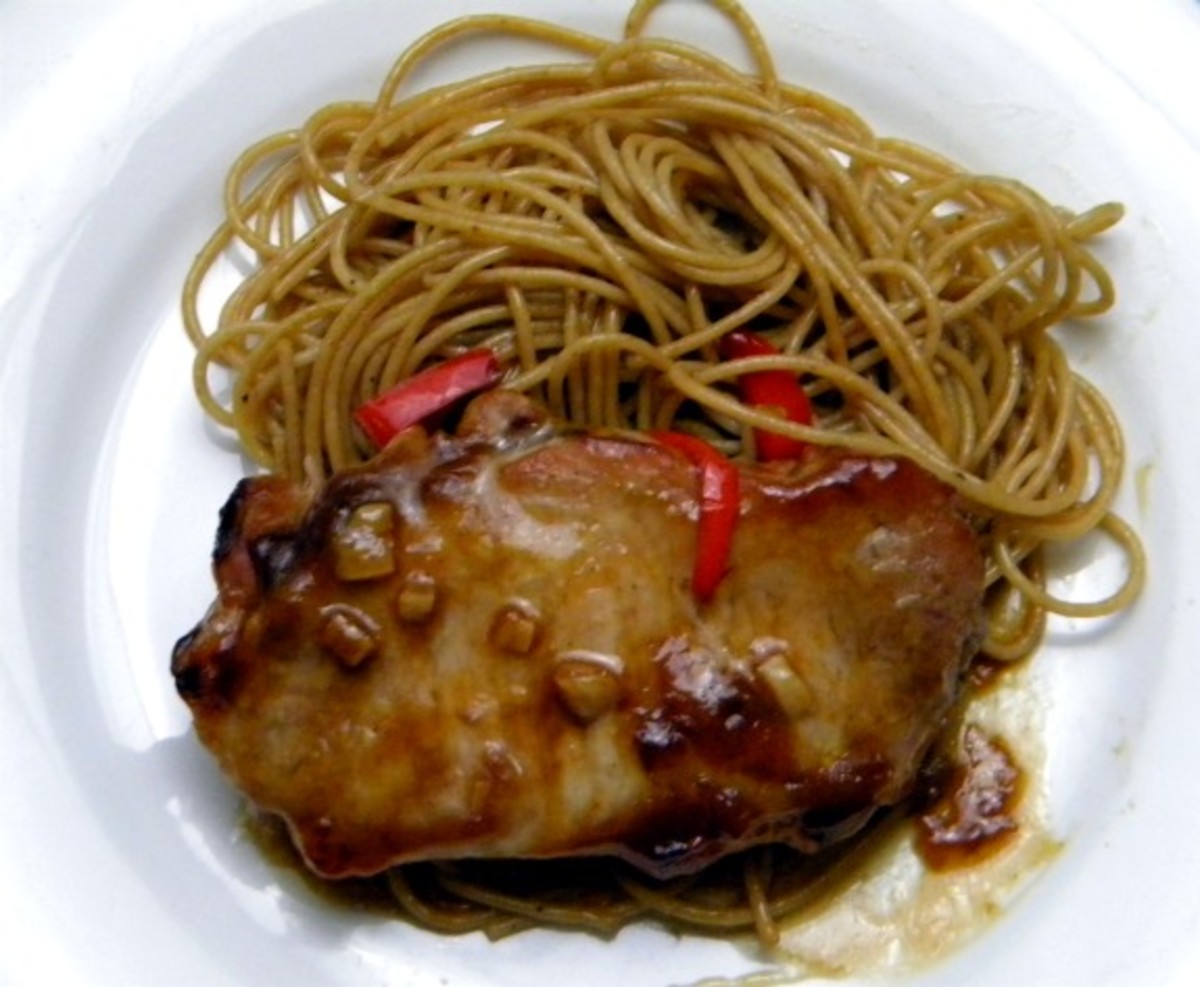Indian Food the Past the Present and the Future

Indian food is like a painting that will never be finished because the painter will never die. The original idea will always be there, but little elements will be added by different artists with different ideas. The cuisine itself is a mix of different time periods, people and places making it one of the most diverse cuisines in the entire world. Today, if you go into most Indian restaurants you see a recurring pattern of dishes such as, chicken tikka masala, aloo gobhi, mango lassi and gulab jamun. If you truly go into the depths of Indian cuisine, there is much more to offer. There are endless arrays of mouthwatering masterpieces waiting to be eaten by our delicate fingers. Indian food pleases each one of your five senses, which makes each dish even more exciting then the last.
Over thousands of years, Indian food has been developed and modernized based on the people and trends of that time period. Unlike other cuisines, Indian food has been added to rather than drastically changed. The original base still stands strong along with the layers and layers of different styles. The Persian influence is reflected in the various meat dishes of the North. The Portuguese brought in chilies and tomatoes from the new world. This became an instant hit on the subcontinent and is today an integral part of Indian cuisine all over India and in the Indian Diaspora all over the world. Present day India has embraced the fast food culture with equal enthusiasm. India’s huge variety of foods now includes McDonalds McAloo tikka burger.
To make most Indian foods you will usually find ingredients such as rice, whole wheat flour (atta), pulses (masoor, channa, toor), vegetable oil, ghee, and most importantly spices. India’s huge variety of spices differ the cuisine from most in the world. Spices make each dish have a unique taste and leave you satisfied at the end. In kitchens all over India and in immigrated Indian families you will find a traditional container with individual fitted bowls laden with spices. The colors inside that container are so colorful they will light up the room no matter how dark it is outside. Some examples of these spices are chili peppers, turmeric, cumin, asafoetida, ginger, coriander and lots of garlic. These spices have a very strong taste, but there are several spices such as nutmeg, saffron, rose petals and cinnamon that are used to make dishes sweeter. Spices used to be so rare in other parts of the world that having a little bottle filled with one spice made you rich. India is truly lucky to have so many different spices.
Eating a traditional meal is a journey within a journey pleasing all your senses. The famous quote “Preparation is half the battle” is completely true in preparing good Indian food. Nowadays that process has been changed by refrigerators, microwaves and chemicals, but to make an Indian meal there are lots of steps. When we go out and buy food, we usually buy enough to last us around a week; Indian food is not like that. The ingredients are carefully chosen based on the season and the level of freshness. Freshness makes food taste much better. Actually eating the food is a very fun experience. In the olden days people used to gather under the roof of their ancestral home. All the kids would sit together on the ground laughing and playing games. Everyone would sit on raised wooden platforms eating off banana leaves. Eating off banana leaves was an extremely eco friendly way of eating because everything would be disposed in a forest and decompose very fast. Traditionally, people would eat with the fingers of their right hands. Many Indian families still eat with their hands, to this day but many people eat with silverware. When your fingers interact with the food, it actually triggers a message to your brain saying that I am pleased with this meal. Feeling the mixture of sticky rice and bumpy dal gives you a pleasing experience. On different occasions the plate would be decorated with different rangoli patterns. Indian food was also never a self serve meal. Usually, someone would come around and give food to everyone. This act made the typical Indian dinner a family occasion.
Eating good Indian food comes with eating calories. Any food in the world can become unhealthy depending on certain characteristics. The portion size is one of the biggest characteristics. If you eat one naan, it is not that bad, but if you eat four or five, the goal of the food disappears. Indian food is pretty healthy because there are lots of fruits and vegetables and less meat, though that isn’t the big problem. The problem is the amount of salt and oil added to the dishes. I found out that two teaspoons of mango pickle has 60 calories but 1930 mg of salt. If you do the math, around ¼ of what you are eating is salt, which is really disgusting to think about. Certain Indian foods, like a chapatti are filled with carbohydrates and fat that you don’t even notice. One single chapatti has around 137 calories and 45 calories from fat. When you put the entire Indian meal together, you usually get each food group. On the tables there are different fishes and meats, vegetable curries and rice dishes. There are several types of breads and lots of different oils. The nuts category even gets filled in at desert. Indian deserts such as rasgolla, kheer, shrikhand, burfi, ladoo all have some kind of milk in them. Indian desserts are one of the most delicious parts of the entire meal. They are creamy, chewy and colorful though they have enough butter for an entire week. Each individual ladoo is bound together by spoons and spoons of ghee. Altogether, you should have 6-11 servings of grains, 3-5 servings of vegetables, 2-4 servings of fruits, 2-3 servings of meats, 2-3 servings of milk and save the sweets and oils for special occasions only.
If I wanted to write about every aspect of Indian food, there would be no paper left in the world. Over the next millennia, who knows what knew creations the human hands will come up with. No matter what, the food in India will have a distinct taste that will never be forgotten and always stand strong. India is a place in which one time is not enough to experience what she has to offer.






